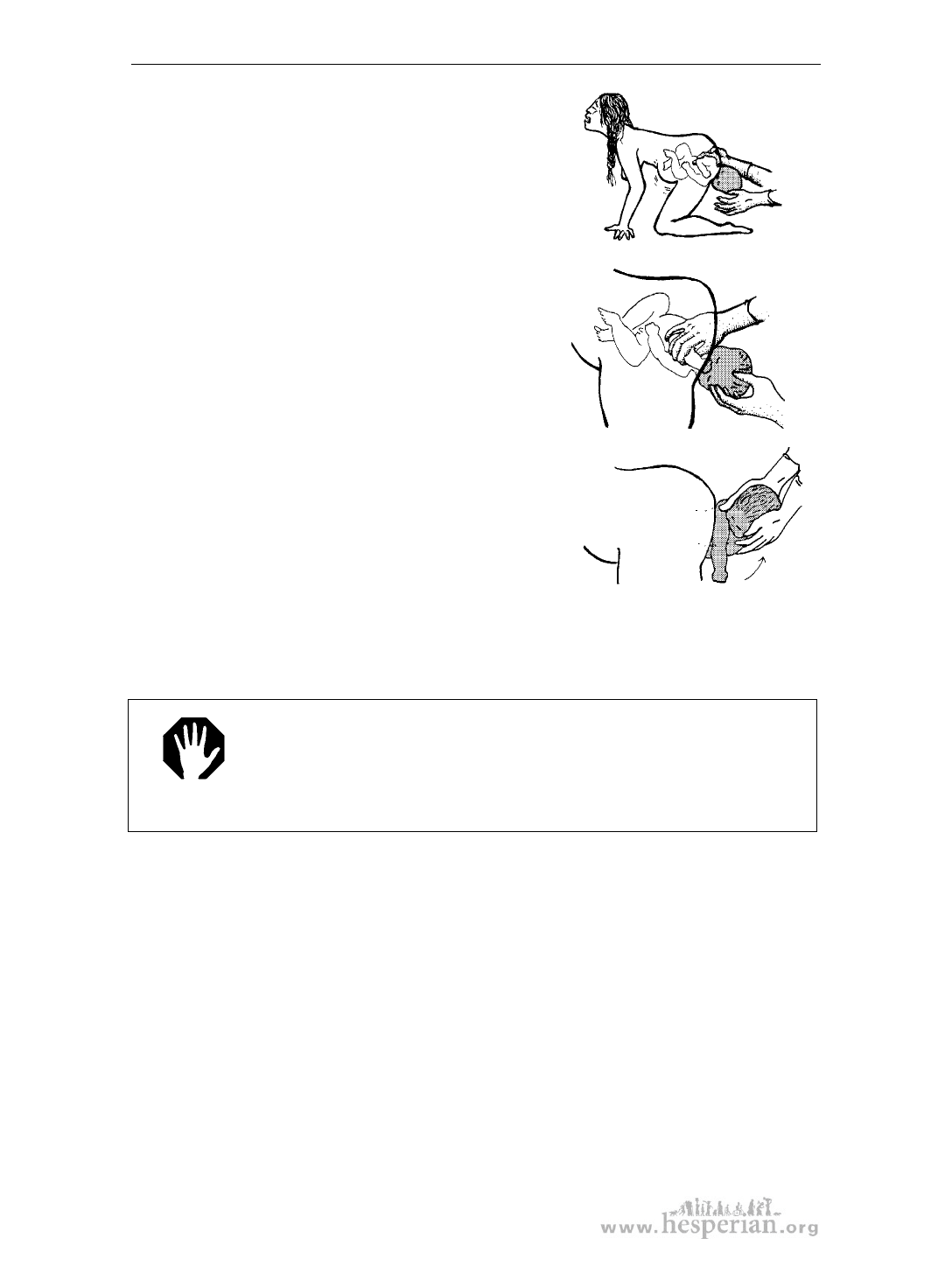
Chapter 12: Pushing – Stage 2 of labor
4. Try pulling the baby’s arm out of the vagina.
Put your hand inside the vagina and up along
the baby’s back.
Move your hand around the baby’s body,
bend the baby’s arm, and grasp his hand.
Pull the hand across the baby’s chest and
out of the birth opening. This is very
difficult to do. Be careful not to push the
collarbone inward as this can cause injury
and bleeding inside the baby.
The baby can now be born easily.
Grasp the baby by the body
(not the arm) and help him
come out.
If none of these methods work, it is better to break the baby’s collarbone to help
him out than to let him die. Reach in with your finger, hook the baby’s collarbone,
pull up toward the baby’s head, and break it. You will need to use a lot of pressure.
WARNING! Never jerk on the baby’s neck, or bend it too far.
You could tear the baby’s nerves.
Babies who get stuck usually have a hard time breathing when
they come out. Be ready to help the baby breathe (see page 241).
Deliver the baby’s body and give the baby to the mother
After the shoulders are born, the rest of the body usually slides out easily.
Remember that new babies are wet and slippery. Be careful not to drop the baby!
Dry the baby immediately with a clean cloth and if everything seems OK, put
the baby on her mother’s belly, skin to skin. This is the best way to keep the baby
warm. You do not have to wait until the placenta comes out or the cord is cut.
Cover the baby with a clean blanket, and make sure the baby's head is covered
with the blanket or a hat.
Babies should breastfeed soon after birth. A baby may show she is ready to feed
by moving her mouth or making smacking noises. Help the mother begin feeding.
After delivery, a baby should stay skin to skin with her mother for at least an
hour without being separated.
212
A Book for Midwives (2010)